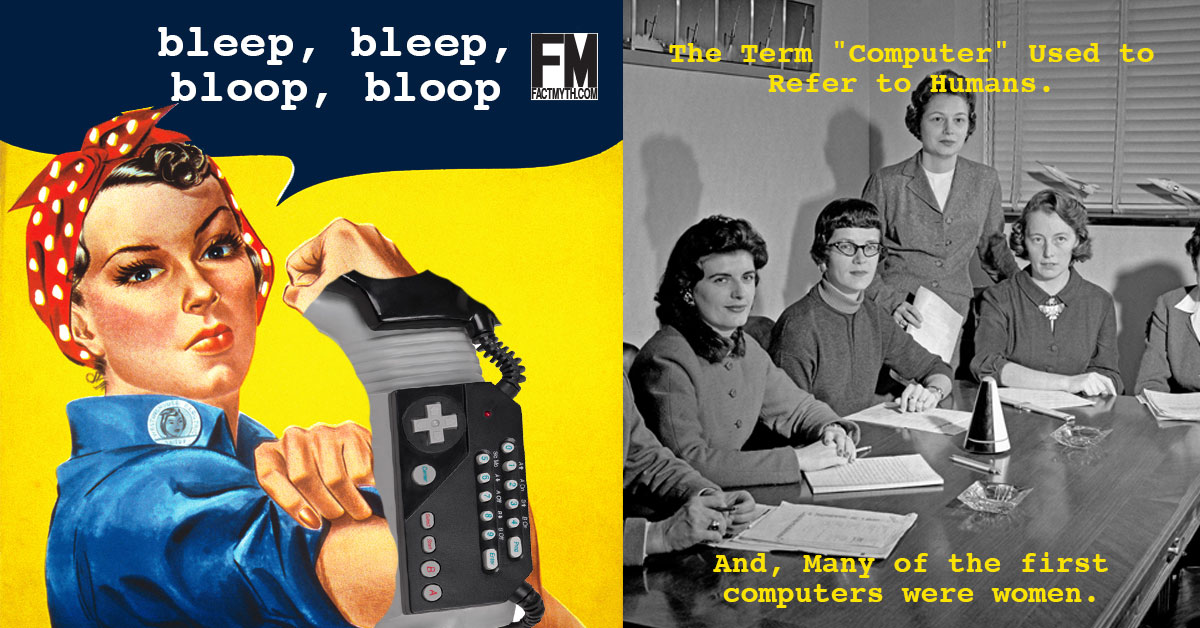The term computer used to be a job title, in this respect “humans used to be computers.” 😀
The Term “Computer” Used to Refer to Humans fact

When Computers Were People: The History of Human Computers and the Women Who Computed
The term “computer” used to refer to humans who did computations (“computer” used to be a job description, not a machine).[1][2]
Below we discuss the history of human computers and the history of women computers.
FACT: One early computer of sorts, Ada Lovelace, was also one of the first computer programers. She wrote the first complex computer code. That code is executable today!
What did “Computer” Originally Mean?
Before the term computer described a machine, it described a job. In this sense a computer was anyone who did computations. Another term used to describe this job was “calculator.” Some humans were also calculators in this sense.
Computer = One who computes. Calculator = One who calculates.
FACT: Early computer/calculators that weren’t people include the antikythera mechanism (an analog computer from 200 BC or so likely made by the Greeks) and the Father of the Computer Charles Babbage‘s analytic and difference engines (theoretical calculators Ada Lovelace wrote her programs for). So, in other words, before computers were electronic machines they were people, and before they were people they were theoretical, and before they were theoretical they were made by early Greeks in around 200 BC.
When Computers Were Humans – NASA Langley CRGIS. This interview with Vera Huckle, Helen Willey, and Marie Burcher was conducted by James Hansen. These women worked at NASA Langley Research Center during WWII as mathematicians, or computers. The interview was probably in the 1990s.Were Only Women Computers?
Women were some of the first computers. Or rather, although both men and women were employed as computers, women tended to be employed as computers more often than men.
This was true in the World War II and later where women computers played a vital role at institutions like NASA.
As a result of this many women helped to win the world wars (where computations were vital in everything from calculating trajectories to code breaking), women helped with the Manhattan project, women helped calculate for NASA before electronic computers took off, and women helped to program the first electronic computers (they essentially trained their replacement, but in the process became some of the first coders).
FACT: The ENIAC (one of the first general-purpose electronic digital computers) was programmed by six women who became the world’s first professional computer programmers. They were not acknowledged at the time (partly because the project was it was a project run by the U.S. Army in Philadelphia as part of a secret World War II program), but today we know Kay McNulty, Betty Snyder, Marlyn Wescoff, Ruth Lichterman, Betty Jean Jennings, and Fran Bilas were some of the first modern computer programmers! You can watch a documentary about them here.[3]
Jean Bartik and the ENIAC Women. It used to take days to calculate a complex trajectory, the ENIAC computer could do the same calculations in about 20 seconds.TIP: Learn more about women computers in WWII from the Engineering and Technology history Wiki.
Great Minds: Katherine Johnson, Human Computer. One human computer.FACT: Alan Turing was also a pioneer of early computing, today he is known as the father of computer science. He also played an important role in WWII.
Henrietta Leavitt & the Human Computers: Great Minds. Another human computer.